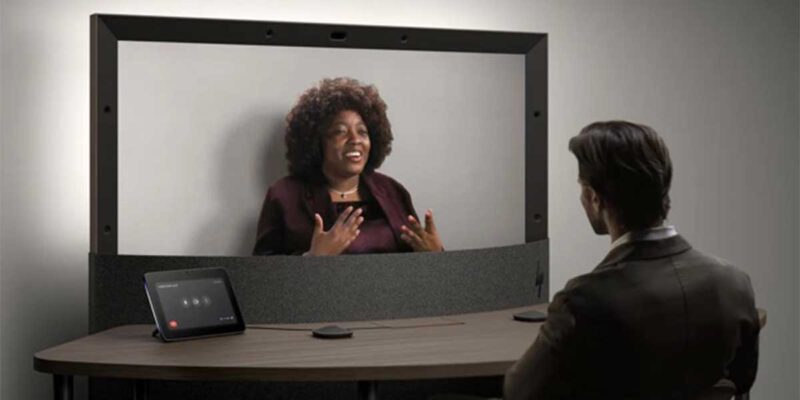This Is What Disruptive Looks Like
 As part of my quest to better understand the UC/AV space – I’ve been reading a lot of research reports. This week I put two reports together to realize something pretty interesting: The professional video cable market is predicted to reach revenues of $2 billion by 2024. If you sell cable to the enterprise – that sounds like good news, until you realize that the wireless video sharing enterprise market has already exceeded $2 billion and is forecasted to exceed 4.5 billion soon. The ProAV cable market has been around for at least 50 years. Wireless video in the conference room has been around for about six years. How can this be? Welcome to the world of disruption.
As part of my quest to better understand the UC/AV space – I’ve been reading a lot of research reports. This week I put two reports together to realize something pretty interesting: The professional video cable market is predicted to reach revenues of $2 billion by 2024. If you sell cable to the enterprise – that sounds like good news, until you realize that the wireless video sharing enterprise market has already exceeded $2 billion and is forecasted to exceed 4.5 billion soon. The ProAV cable market has been around for at least 50 years. Wireless video in the conference room has been around for about six years. How can this be? Welcome to the world of disruption.
Back in our venture capital pitch days – Rob Balgley (our CEO) and I spent a lot of time on the road, talking with the VC community about wireless content streaming for the meeting room and how it would revolutionize meeting culture. Did everyone agree? No way – but that’s part of the VC model. Rob and I had to believe in the importance of what we were doing almost religiously – while the VC’s role is to apply a strong filter to the hundreds of deals that flow across their desks. Folks like myself who measure the historical trends of technology and use them to come up with premonitions about the future – are viewed skeptically and only a few ideas that are big enough and are backed by a team that’s willing to do almost anything to get funded survive (even literally chase a VC across a tarmac in San Jose with our elevator pitch talking to the back of the VC as they board a private jet – but that’s a different blog post altogether). It’s a sort of natural selection that can work. The goal for the VC community is to invest in enough deals that at least one out of 10 leads is “disruptive.” But what is disruption – why is it interesting and what does it look like in a market?
In the days where we were asked to size the market for wireless media sharing (this was well before you could watch HBO on your iPad) – I would often point to the market for professional AV cables – after all, wireless transmission of your desktop is the software version of the cable. My answer would be along the lines of, “What’s the market size for video cables worldwide? It’s that.” While this may have come across as flippant (or even ridiculous along the lines of the Ice Cream Eating Glove: his market sizing occurs at about 1:30) – it made the point that the existing hardware-based market was quite large and software replacing hardware is a proven model.
It’s only been a few years since we were proving the market for a collaborative wireless meeting room platform and things have changed dramatically. As I pointed out – research shows that the market for wireless sharing in the enterprise has already exceeded sharing via the video cable. In fact, I was likely way too conservative in comparing wireless to the cable. Wireless media sharing to the display is turning out to be transformative to how we work together. This happened so fast some of the top market research firms still don’t recognize wireless collaboration as a separate market and instead still view it as a feature within the unified communications ecosystem – that it’s a feature of your video conferencing solution. Tell that to the 3 million plus end users that use wireless to share to their colleagues on the display in the room without video conferencing.
Disruptive technology, once it’s introduced to the correct market, starts a chain-reaction of events that have been poised for the change and simply can’t be slowed. This can cause collateral damage that’s often unpredictable (i.e., it may not be a good idea to build a business selling professional video cables). The cellphone was one such example, and I’d argue that wireless sharing is having similar impact in our workplace. The good news is that the disruption is almost always focused on things we no longer want or need. Disruptive technologies are at their best when they disrupt complex systems, specialized hardware, expensive and cumbersome business models, slow-to-respond systems, etc., but they should never disrupt the user. In the case of wireless, users have suffered with the unfortunate side-effects of the dedicated video cable for so long that they can’t wait to share freely and to contribute in meetings without having to stop everything to see if they can attach their device to the display. This type of disruption enables behaviors that users have always wanted. At the same time, wireless collaboration is already disrupting cables, switchers, and hard-to-use room systems that have made conferencing rooms expensive and difficult to use.
So where does this go? A market that is growing at over 40% year over year will have some real implications to the workplace. That’s the thing about disruptive technologies – it was hard to see the social and economic impact the cellphone would have when the first “mobile car phone” was introduced. I do think the ability to share content to any display anywhere on demand will likely disrupt another fairly cumbersome market that sits right next door – video conferencing. It’s why I’ve become interested in video conferencing and how we work with remote participants – the disruptive story of wireless will definitely have impact there – stay tuned to see how.
This column was reprinted with permission and originally appeared here.




